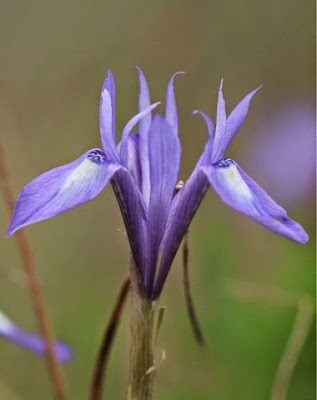I have to say I have found surveying willow tits to be a bigger challenge than I had envisaged. Using my mobile phone to play snippets of call and song is great at getting responses, the challenge then is to work out if you have got a willow or a marsh tit. The literature on identification is very extensive but there is no substitute for time spent in the field. Sometimes it is easy - last Saturday the willow tit a Grimsbury Reservoir was singing, I thought, more like a marsh tit but then gave the classic buzzing "chay" call, flashed his pale wing panel and job done. Last week a walk along the Oxford canal yielded a perfect willow tit song in response to my phone, the bird approached me, still singing the classic song, not unlike a wood warbler. The problem was this bird looked like a marsh tit - neat bib, no wing panel. I tried to take some pics to confirm later but it stayed above me. Now all I could hear was a different song, classic marsh tit. I am sure it was the same bird. Checking the literature later - yes the marsh tit can, in a small percentage of cases, sing very like a willow tit! Finally this week I made my first Breeding Bird Survey at my regular site near Moreton Pinkney in south Northants. Almost immediately I heard a "chay" in the distance so used my mobile phone again, this time the desired effect - a pair of willow tits....but then a third bird joined in - neat bib, no pale wing panel, looked like a marsh tit and clearly different to the pair. My lesson from all this: if using playback be very cautious, marsh tits respond as much as willow tits and song can be unreliable, especially if you (like me) are still learning their full repertoire!
Meanwhile, what a great April we are having: fabulous weather, a blaze of spring flowers, green sprouting foliage and waves of migrants.
 |
| sand martins, house martins and swallows at Grimsbury Reservoir |
|
 |
| blackcap in plum blossom |
Ring ouzels have been the highlight for many, with more stopping off in our area than usual. I had a couple of glimpses of a bird at Tadmarton Heath Golf Course, a new one for me in the local area.
 |
| male ring ouzel, this bird was quite shy |
I have enjoyed a couple of early mornings exploring the
Tadmarton Heath BOS reserve, nothing too unusual, but watching a couple of chiffchaffs busily gathering strands of grass then taking them to nest sites deep in bramble thickets was a highlight. The nest boxes were checked there recently - there are already tawny owl and stock dove chicks - a reminder that many species are well into their breeding cycle just as others are returning to start theirs.
 |
| chiffchaff nest building |
Elsewhere across the "Heart of England", two different pairs of cranes have been visiting
Otmoor in the past few days, a sign that they may be spreading out from the Somerset re-introduction area. It is not inconceivable they might colonise Banburyshire - the Cherwell Valley has good habitat for curlews (around 8-10 pairs), perhaps the cranes will decide they like it too?
 |
| Upper Cherwell Valley |
A pair of black-winged stilts stayed for a day (18th) at
Middleton Lakes, part of a small influx into the country, but sadly decided to move on. They are stunning birds!
 |
| black-winged stilts, Cyprus |









































